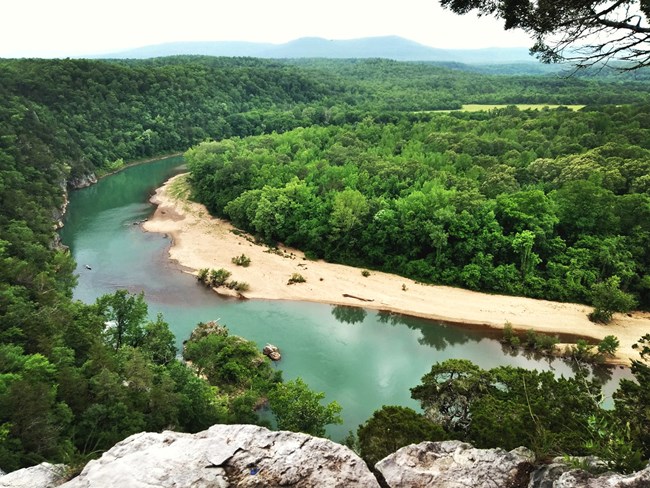Part of a series of articles titled Phenomenal Science.
Previous: Lepidodendron Fossil
Next: Mineral-Stained Bluffs
Article

Heather Janke
If you've ever been lucky enough to see the Buffalo River in the right conditions, you've surely been enamored and perplexed by the color of the water. So, what exactly causes that turquoise/teal color?
It can be traced back to the rocks that the Buffalo is flowing through. The river cuts through sandstones, limestones and some dolostones. But the culprit for the beautiful blue is the limestone! Limestone is composed primarily of calcium carbonate (CaCO3) and is white in color. As the river breaks down this rock into tiny crystals, these crystals will get mixed up into the water. When sunlight hits the tiny crystals, it will reflect that beautiful blue color.
The sediments and crystals generally get washed into the river and/or churned up during rainstorms and high flow. This is why the water often appears murky brown immediately after a big rain. The larger, silty sediments then begin settling to the bottom of the river, leaving only the finer ones suspended in the water. This is the sweet spot where you get the teal/turquoise color. If we go long periods of time without any rain and sediment loading, like in the summertime, the water turns almost crystal clear, losing its bluish hue. The lack of disturbance allows the finer sediments to settle to the bottom of the river, too.

NPS
Part of a series of articles titled Phenomenal Science.
Previous: Lepidodendron Fossil
Next: Mineral-Stained Bluffs
Last updated: June 12, 2021